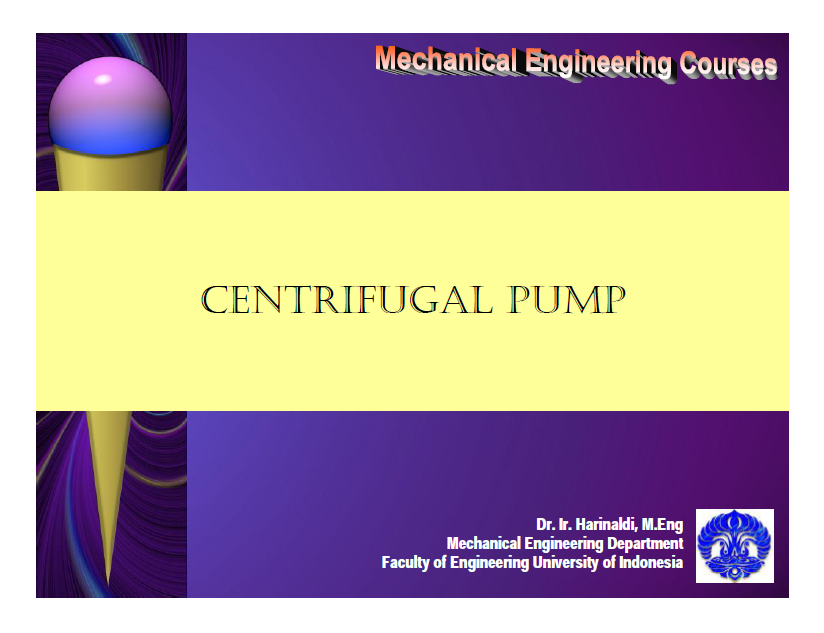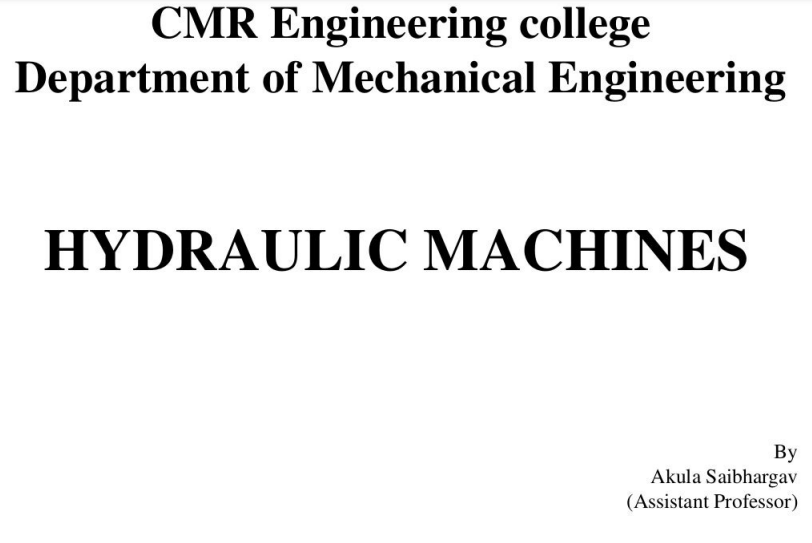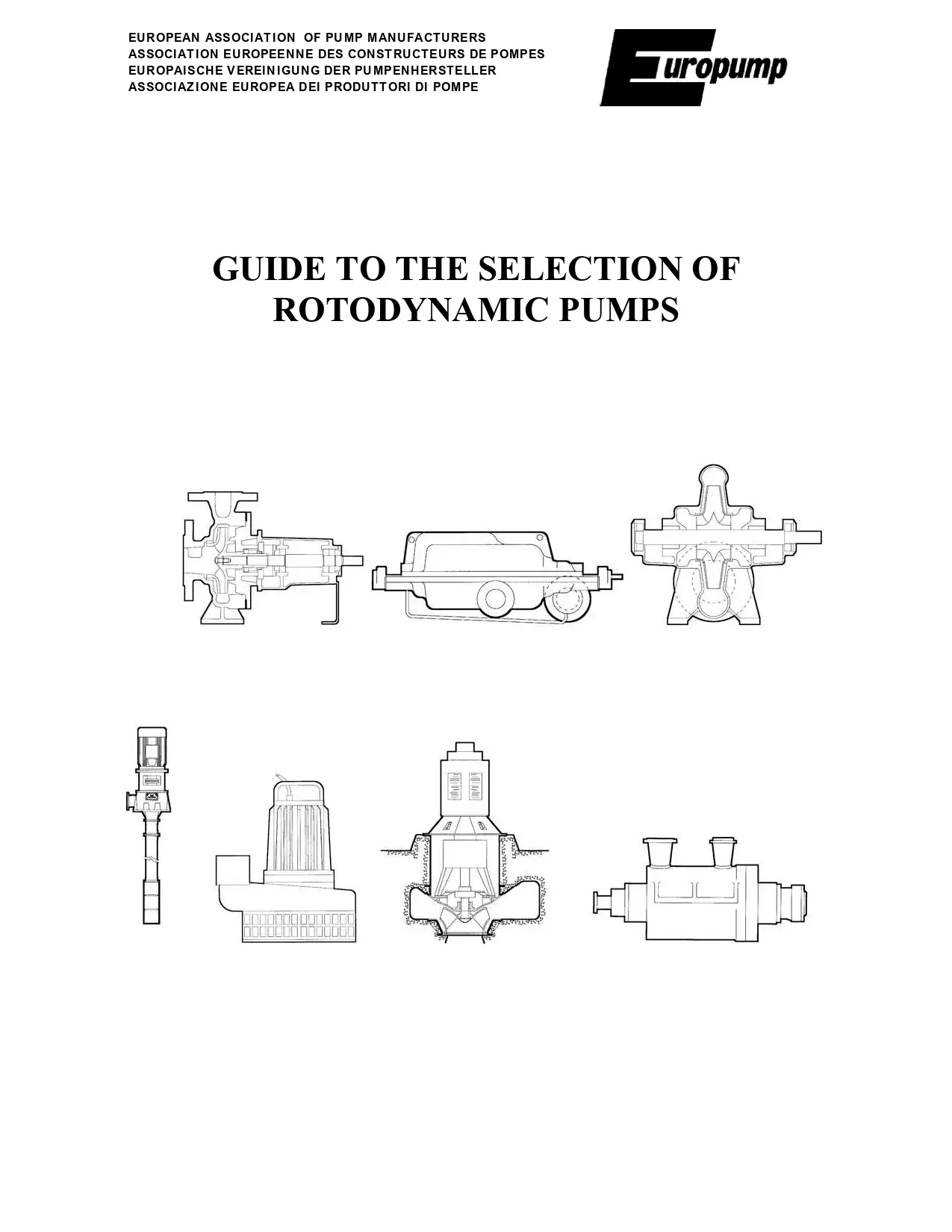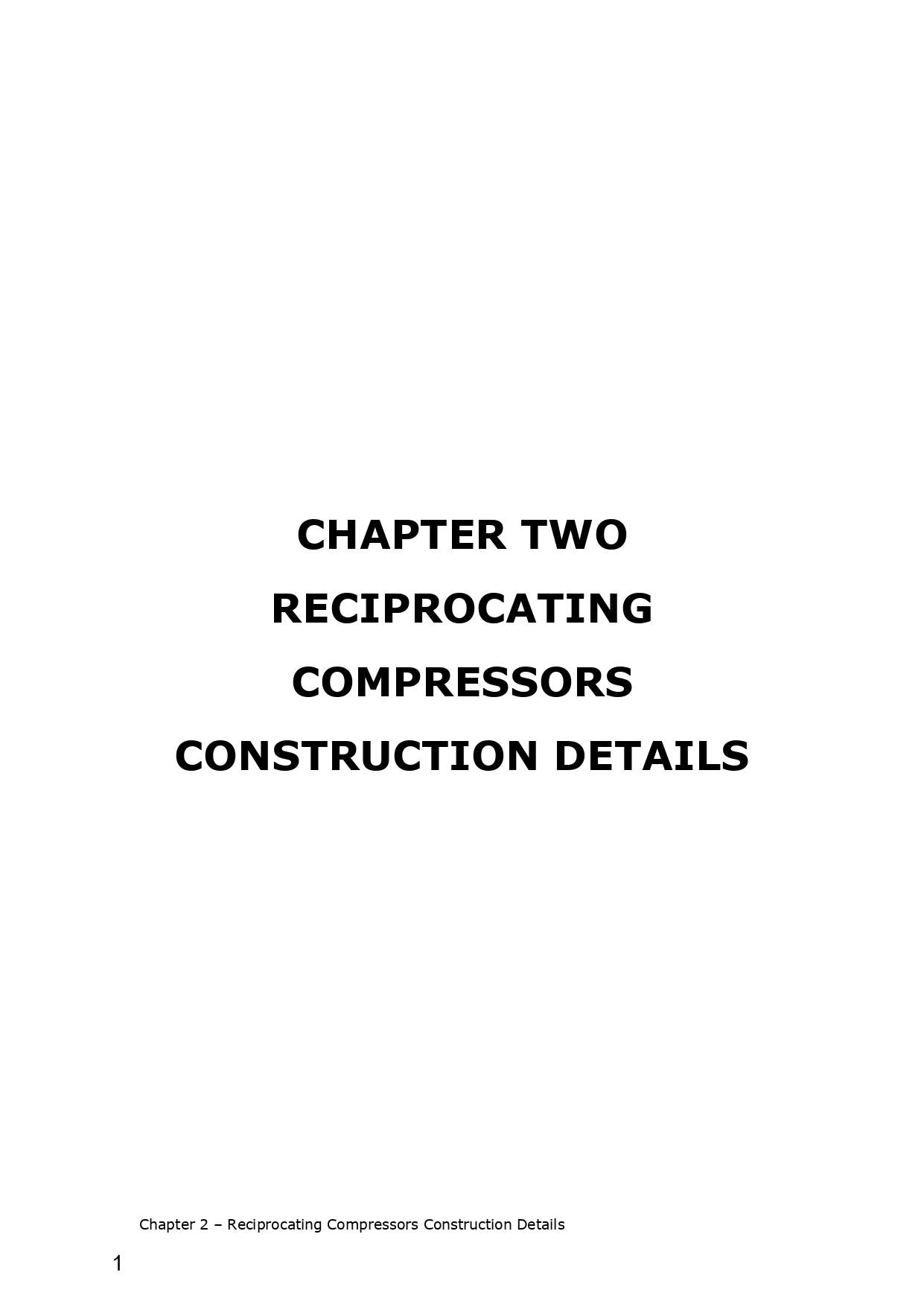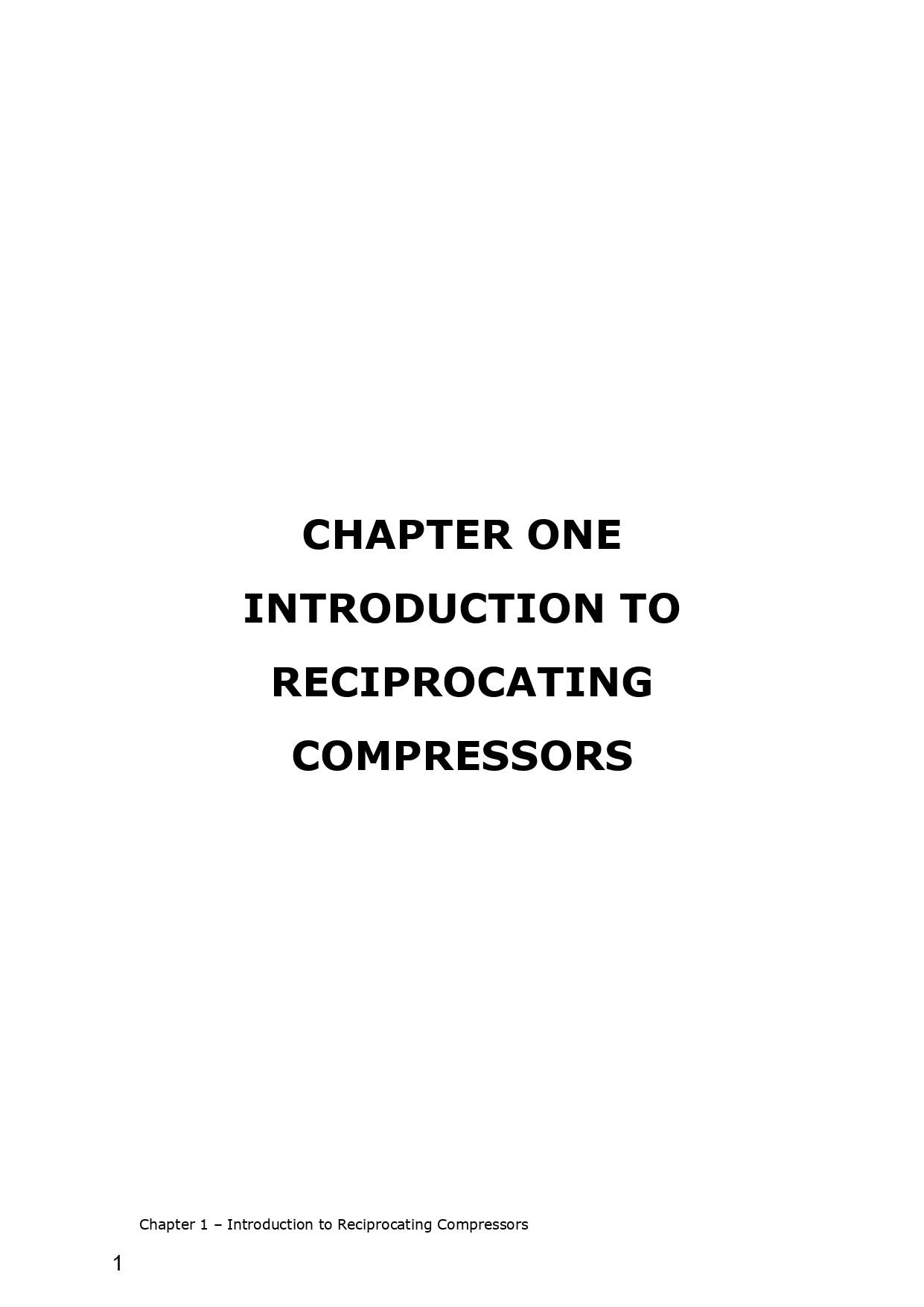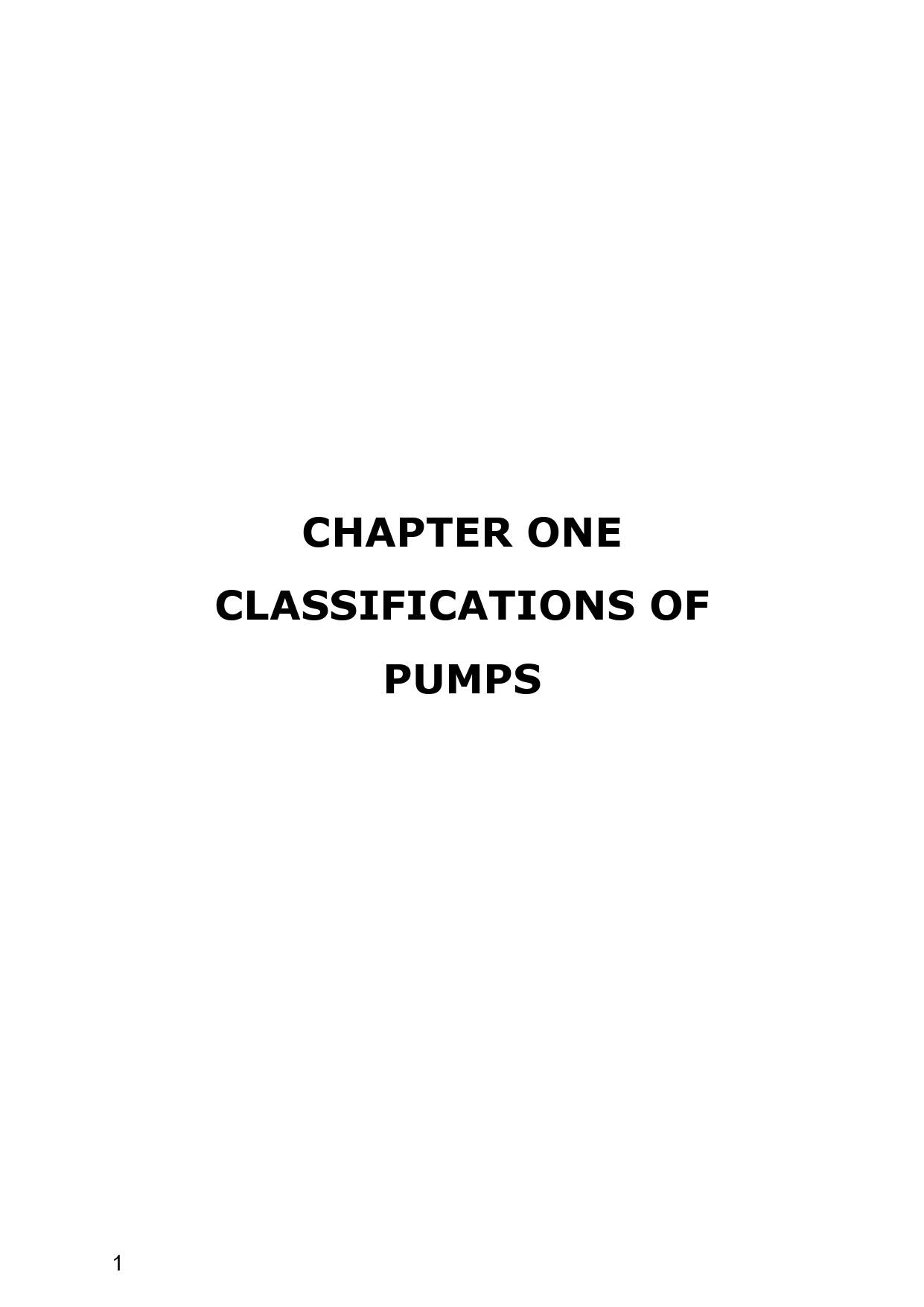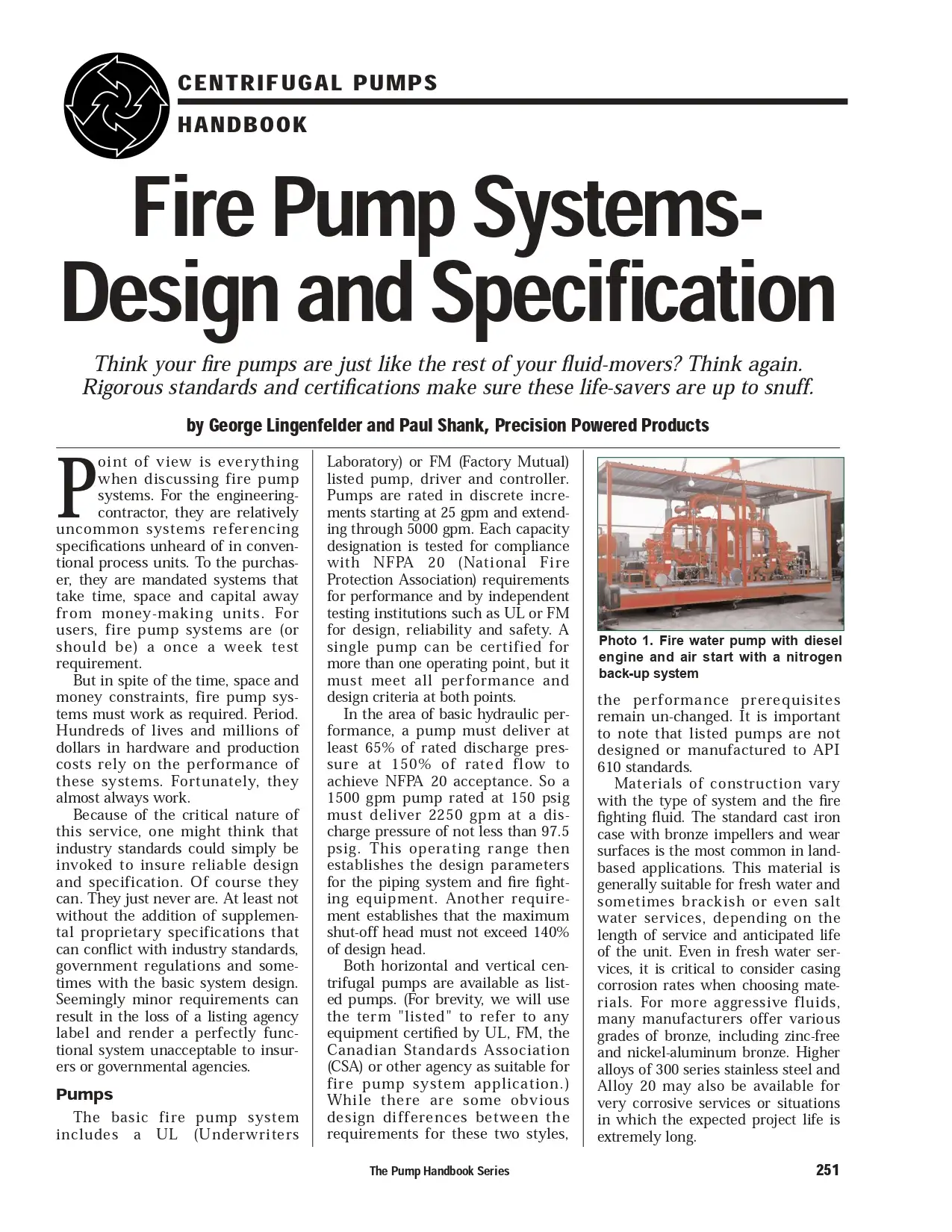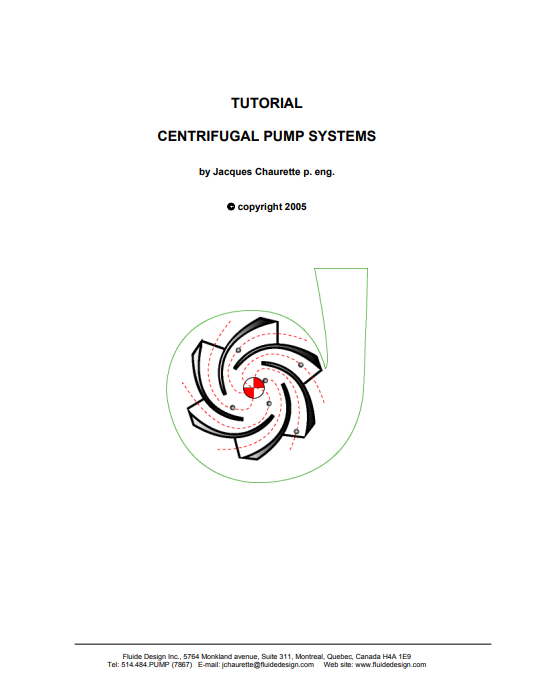Hydraulic Machines
What are Hydraulic Machines?
Hydraulic Machines are defined as those machines which convert either hydraulic energy ( energy possessed by water) into mechanical energy ( P.E+K.E) energy into hydraulic EX
- Pumps
- Turbine s
Hydraulic Machines
What are Hydraulic Machines?
Hydraulic Machines are defined as those machines which convert either hydraulic energy ( energy possessed by water) into mechanical energy ( P.E+K.E) energy into hydraulic EX
- Pumps
- Turbine s
Guide To The Selection Of Rotodynamic Pumps
Purpose of this Guide to pump procurement
This Guide provides an introduction to the very complex subject of the selection of pumps. It is aimed at anyone who wishes to purchase or select a pump and, at the same time, wishes to save money on their energy bill. Almost invariably, this saving will be far more than the first cost of the pump. The reader may be the end user, a contractor, or a consultant. This Guide provides the reader with the basic principles of pump procurement, giving pointers to the pump type and performance they should consider. Pumps are divided into their main types, then their basic construction and performance are considered, their principal applications are described, the basic principles of pump selection are explained and, last but not least, target efficiencies are set to help minimize energy usage. The hope is that both pump users and the environment will benefit.
Guide To The Selection Of Rotodynamic Pumps
Purpose of this Guide to pump procurement
This Guide provides an introduction to the very complex subject of the selection of pumps. It is aimed at anyone who wishes to purchase or select a pump and, at the same time, wishes to save money on their energy bill. Almost invariably, this saving will be far more than the first cost of the pump. The reader may be the end user, a contractor, or a consultant. This Guide provides the reader with the basic principles of pump procurement, giving pointers to the pump type and performance they should consider. Pumps are divided into their main types, then their basic construction and performance are considered, their principal applications are described, the basic principles of pump selection are explained and, last but not least, target efficiencies are set to help minimize energy usage. The hope is that both pump users and the environment will benefit.
Chapter Two Reciprocating Compressors Construction Details
Reciprocating Compressors Construction Details
In general, materials for the construction of the compressor and auxiliaries are normally the manufacturer's standard for the specified operating conditions except as required by the datasheet or certain specifications.
Chapter Two Reciprocating Compressors Construction Details
Reciprocating Compressors Construction Details
In general, materials for the construction of the compressor and auxiliaries are normally the manufacturer's standard for the specified operating conditions except as required by the datasheet or certain specifications.
Chapter One Introduction To Reciprocating Compressors
Introduction
Compressors are used whenever it is necessary to flow gas from a low-pressure system to a higher-pressure system. Flash gas from low-pressure vessels used for multi-stage stabilization of liquids, oil treating, water treating, etc.; often exists at too low a pressure to flow into the gas sales pipeline. Sometimes this gas is used as fuel, and them the remainder is flared or vented. In many instances, it is economically attractive to compress this gas to a high enough pressure so it can be sold. Compression may also be required for environmental reasons. Flash gas that might otherwise be flared may be compressed for sales or gas produced with oil (associated gas) may be compressed for re-injection to avoid, flaring or to help maintain reservoir pressure. In some marginal gas fields, and in many larger gas fields that experience a decline in flowing pressure with time, it may be economical to allow the wells to flow at surface pressures below that required for gas sales. In such cases, a booster compressor (one where the ratio of discharge to suction pressure is low) may be installed. Booster compressors are also used on long pipelines to restore pressure drop lost to friction. The use of large compressors is probably more prevalent in oil field facilities than in gas field facilities. Oil wells often require low flowing surface pressures and the gas that flashes off the oil in the separator must be compressed. Often, natural gas is, injected into the tubing of the well to lighten the column of liquid and reduce downhole pressure. This "gas lift" gas is produced back with good fluids at low pressure. Compressors are used so the lift gas can be recirculated and
Chapter One Introduction To Reciprocating Compressors
Introduction
Compressors are used whenever it is necessary to flow gas from a low-pressure system to a higher-pressure system. Flash gas from low-pressure vessels used for multi-stage stabilization of liquids, oil treating, water treating, etc.; often exists at too low a pressure to flow into the gas sales pipeline. Sometimes this gas is used as fuel, and them the remainder is flared or vented. In many instances, it is economically attractive to compress this gas to a high enough pressure so it can be sold. Compression may also be required for environmental reasons. Flash gas that might otherwise be flared may be compressed for sales or gas produced with oil (associated gas) may be compressed for re-injection to avoid, flaring or to help maintain reservoir pressure. In some marginal gas fields, and in many larger gas fields that experience a decline in flowing pressure with time, it may be economical to allow the wells to flow at surface pressures below that required for gas sales. In such cases, a booster compressor (one where the ratio of discharge to suction pressure is low) may be installed. Booster compressors are also used on long pipelines to restore pressure drop lost to friction. The use of large compressors is probably more prevalent in oil field facilities than in gas field facilities. Oil wells often require low flowing surface pressures and the gas that flashes off the oil in the separator must be compressed. Often, natural gas is, injected into the tubing of the well to lighten the column of liquid and reduce downhole pressure. This "gas lift" gas is produced back with good fluids at low pressure. Compressors are used so the lift gas can be recirculated and
Chapter One Classification Of Pumps
What Is a Pump?
A pump is a machine or device for raising, transferring, or compressing fluids. Pumps represent the largest single use of power in the industry (31%) by motor-driven equipment. Process variables, including pressure and flow of gases and liquids, have long been regulated using mechanical clutches, throttles, and adjustable inlet guide vanes. Pumps often operate as a variable torque load, a load that increases as the speed increases. These mechanisms waste energy, require frequent maintenance, and provide inaccurate control.
Chapter One Classification Of Pumps
What Is a Pump?
A pump is a machine or device for raising, transferring, or compressing fluids. Pumps represent the largest single use of power in the industry (31%) by motor-driven equipment. Process variables, including pressure and flow of gases and liquids, have long been regulated using mechanical clutches, throttles, and adjustable inlet guide vanes. Pumps often operate as a variable torque load, a load that increases as the speed increases. These mechanisms waste energy, require frequent maintenance, and provide inaccurate control.
Fire Pump Systems Design and Specification
Think your fire pumps are just like the rest of your fluid movers? Think again. Rigorous standards and certifications make sure these life-savers are up to snuff
Fire Pump Systems Design and Specification
Think your fire pumps are just like the rest of your fluid movers? Think again. Rigorous standards and certifications make sure these life-savers are up to snuff


